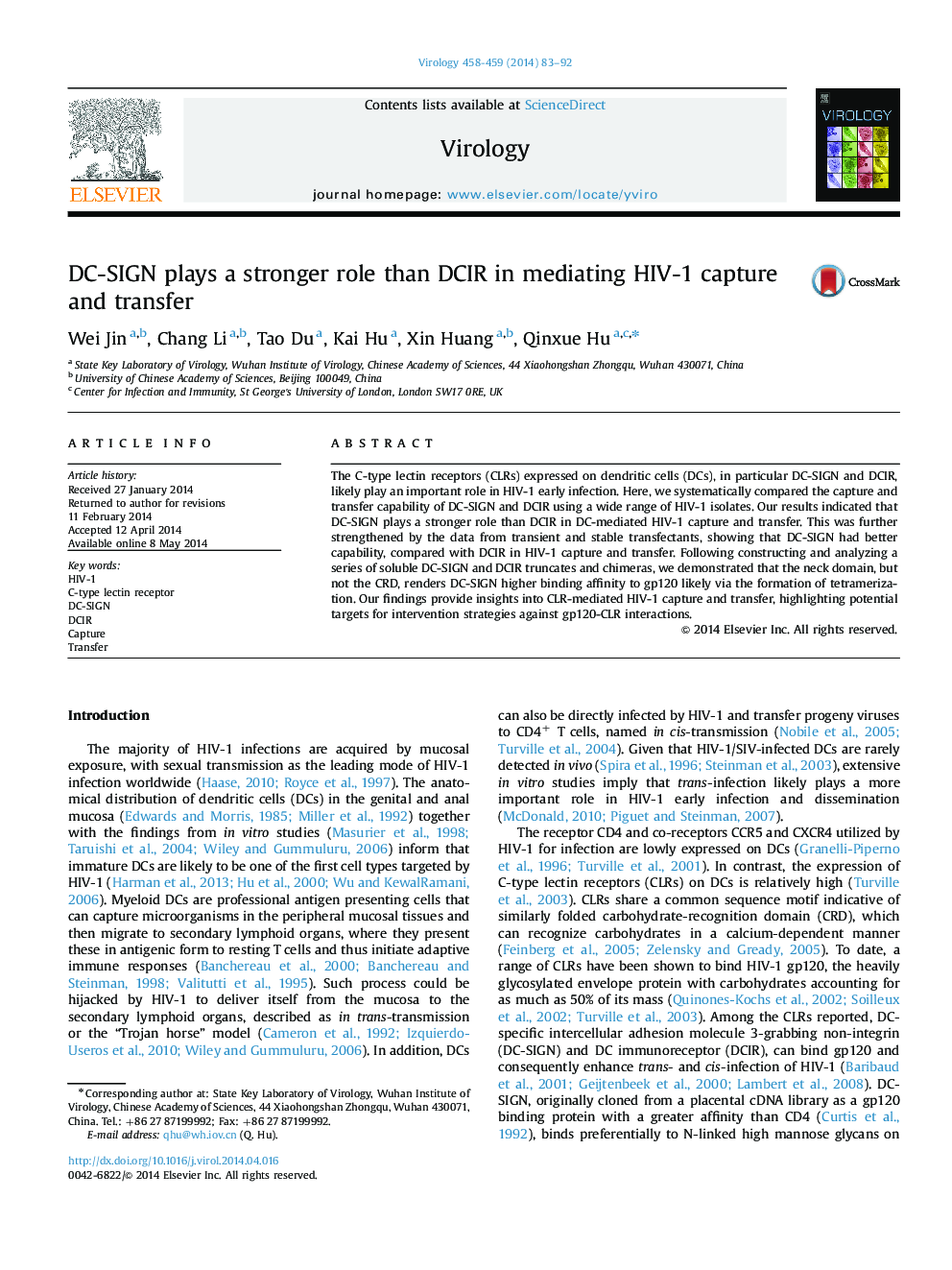| Article ID | Journal | Published Year | Pages | File Type |
|---|---|---|---|---|
| 6140115 | Virology | 2014 | 10 Pages |
â¢DC-SIGN demonstrates stronger capability than DCIR in HIV-1 capture and transfer.â¢DC-SIGN is more efficient than DCIR in capturing a wild range of HIV-1 isolates.â¢Tetramerization renders DC-SIGN higher binding affinity to gp120.
The C-type lectin receptors (CLRs) expressed on dendritic cells (DCs), in particular DC-SIGN and DCIR, likely play an important role in HIV-1 early infection. Here, we systematically compared the capture and transfer capability of DC-SIGN and DCIR using a wide range of HIV-1 isolates. Our results indicated that DC-SIGN plays a stronger role than DCIR in DC-mediated HIV-1 capture and transfer. This was further strengthened by the data from transient and stable transfectants, showing that DC-SIGN had better capability, compared with DCIR in HIV-1 capture and transfer. Following constructing and analyzing a series of soluble DC-SIGN and DCIR truncates and chimeras, we demonstrated that the neck domain, but not the CRD, renders DC-SIGN higher binding affinity to gp120 likely via the formation of tetramerization. Our findings provide insights into CLR-mediated HIV-1 capture and transfer, highlighting potential targets for intervention strategies against gp120-CLR interactions.
